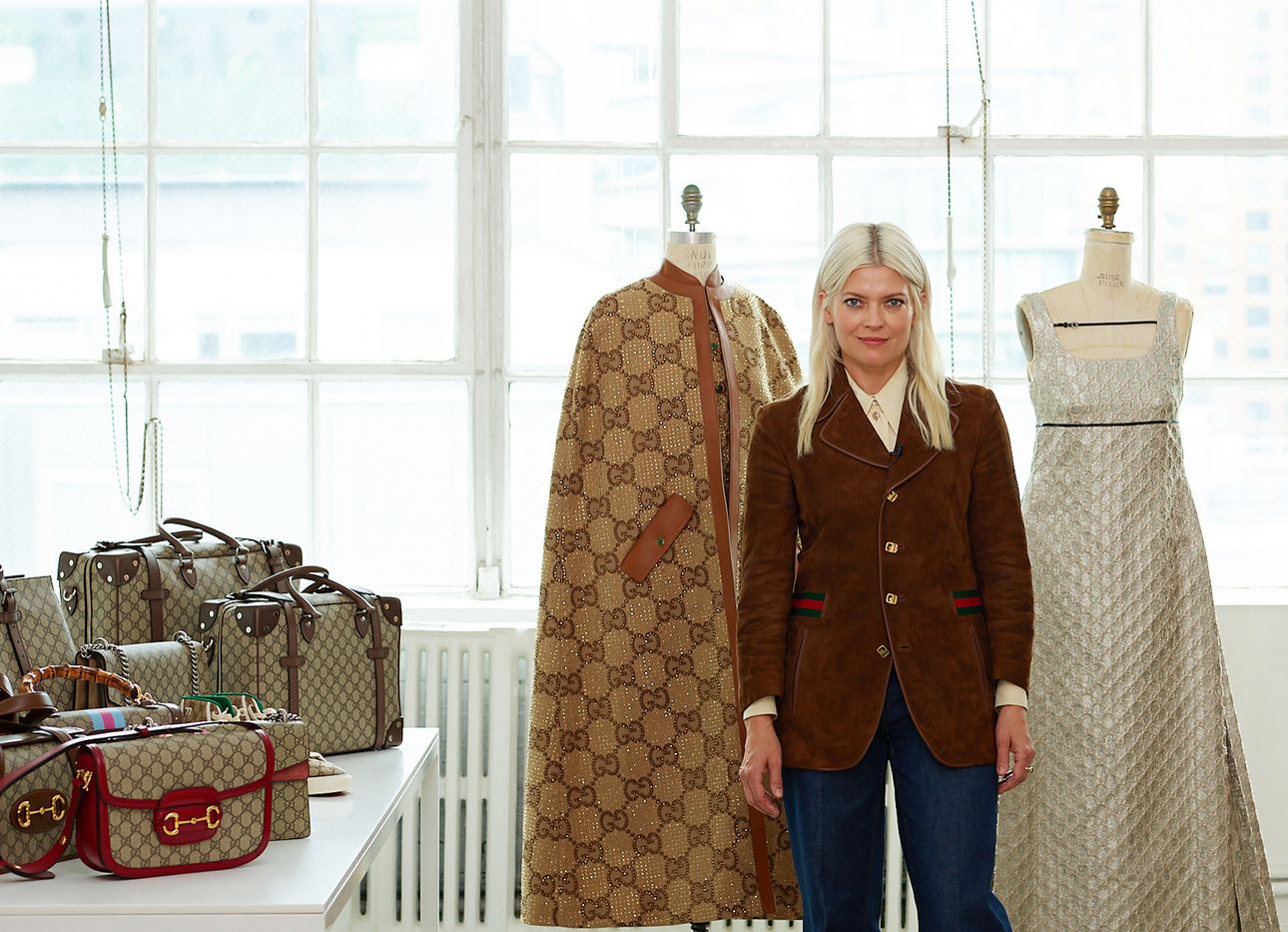
The Codes and Modes of Gucci
Gucci. The luxury fashion house’s name alone conjures up images of vibrancy, extravagance, experimentation, and offbeat flair. Indeed, the brand is known for its ways of uprooting social norms and weaving together various time periods to create a captivating and instantly recognizable aesthetic. In stylist Kate Young’s words, Gucci is “a world you enter into.” On the latest episode of Hello Fashion, Young’s YouTube show created with The Slowdown, she investigates how this “world” came to be by illuminating the house’s central codes and probing the minds of its creators.
After describing Gucci’s 20th-century history—which began in Italy with Guccio Gucci in 1921, and that was revived by Tom Ford in the 1990s—Young delves into the influence of Alessandro Michele, who serves as Gucci’s creative director to this day. To Young, Michele’s arrival was nothing short of revolutionary for the brand: His designs questioned and undermined traditional ideas of beauty, gender, and aesthetic cohesion in ways that were eccentric and provocative, yet still digestible. “It looked like a bunch of cool kids wearing their grandmothers’ couture to a fun rave, instead of a bunch of swan-like models in a restrained fashion show setting,” Young says.
Unique to Michele is his way of synthesizing various time periods—most notably ancient Rome, ’60s Gucci, and the modern day—and interpreting the house’s codes through that temporal lens. As Young goes on to describe, the codes are as recognizable as ever. The first code she highlights is the “Flora” print, originally commissioned in 1966 for a scarf for Princess Grace of Monaco. As Young explains, instead of a typical repeating pattern of flowers, the print depicts four distinct bouquets, each representing a season of the year. The print—which Young describes as “captivating” due to its use of 37 different colors—is available in myriad forms, including wallpaper, clothing, and even porcelain tableware.
The next code is the “GG” logo, created by Gucci’s eldest son, Aldo, to symbolize his father’s name. The logo, which became very successful in the 1960s, continues to be a central motif in Gucci designs today. Young then turns to the third central code, the red and green stripe, which is most commonly depicted on cotton grosgrain. The final code Young touches on is the horsebit, a simple metal piece composed of two rings attached by a bar, which is placed on many of Gucci’s handbags and loafers. Horsebits became a symbol of luxury in the ’70s and were soon adorning celebrities and wealthy people worldwide. Says Young: “They became an absolutely identifiable symbol of status and good taste.”
Finally, Young describes two of Gucci’s recent projects: the Gucci Garden and the Gucci Vault. Created by Michele, the Gucci Garden is a museum-store in Florence’s Palazzo della Mercanzia that creates a dialogue between the past and present of the brand. The building houses archival gowns, scarves, stationery, and vintage and contemporary jewelry and luggage, as well as art installations by young contemporary artists that relate to the brand. The Gucci Vault, meanwhile, is an internet manifestation of the Gucci Garden—an experimental online space where browsers can buy vintage Gucci pieces and also learn about the work of up-and-coming designers.
Ultimately, for Young, Gucci is the brand it is today because it avoids pretense and is unabashedly itself. “I love Gucci because the tone of Gucci is loving fashion,” she says. “What you see with Alessandro is: Embrace beauty in all different forms. Make it fun. Sparkle. Wear stuff you love. And make it your own.” That spirit, Young thinks, is what will keep Gucci forever young. “This is who they are, this is the future. Forget everything that came before.”
Watch new and previous episodes of Kate Young’s YouTube show Hello Fashion at youtube.com/kateyoung.